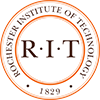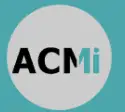
What other programs make you think of getting creative than Art? Many college students who are born artists pursue art courses and those who want to immerse themselves in the creative industry can also get the job done. With the right dedication, patience, and effort, you can surely ace art projects to another.
Below are some mistakes art students commit that you should not do:
Thinking art will be a fun and useful ‘filler’ topic
Lots of students choose art because they believe it will be an enjoyable subject in which they can splatter paint and scribble with colored crayons. Students who think of this misconception get a rude awakening. Art can be exciting, but it also requires an enormous lot of effort. It necessitates consistent and continuous work. Most students devote more time to their art homework than they do to all of their other classes combined. Art should be pursued for one motive only: it makes you happy to play with line, tone, shape, form, texture, and color.
Taking an excessive amount of time to get started
Some students have the anxiety that they don’t have an original initial point or that they haven’t properly interpreted their exam topic. They spend a long time agonizing about their topic choice, unsure if it is solid enough. The truth is that it is what you do with a concept that matters, not the idea itself. Even the most mundane starts can be transformed into jaw-droppingly astounding works of art if they are done properly and with reference to the appropriate artist models.
Slowing your assignment in the hopes of finding the “ideal” topic rarely works; instead, it leads to frantic, last-minute submissions that are a faint shadow of what they could have been if you had used the entire duration. In almost all circumstances, great high school art portfolios require time. Do yourself a favor and get started now.
Failure to demonstrate progress
Various art qualifications (such as IGCSE, GCSE, NCEA, and A-Level Art) require students to enhance ideas from conception to completion. Challenges with growth usually manifest themselves in one of two ways: submitting a collection of unrelated work or submitting work that never develops.
Using second-hand sources as a starting point
One of the riskiest tactics an art student can apply is drawing or painting from images captured by others. It raises red flags for the examiner because it can suggest a lack of personal connection to a topic, as well as a lack of originality, plagiarism issues, and superficial / surface-deep work.
Restarting work on a regular basis
Art students are frequently perfectionists who want every detail of their portfolio to be flawless. This desire is admirable – in fact, most instructors wish it were a more popular notion – but the procedures for accomplishing it are frequently flawed. It is not a good idea to keep restarting parts of work. A drawing, painting, or mixed-media piece may almost always be worked on and enhanced. Initial “poor” layers nearly always give an artwork more substance, resulting in a richer finished piece. Students who frequently restart work have less time to finish the next item, and they frequently wind up with a folder of half-completed pieces that do not actually reflect their abilities.
Get to know other useful tips and tricks for your journey as a college student. Browse through MSM Unify.














































